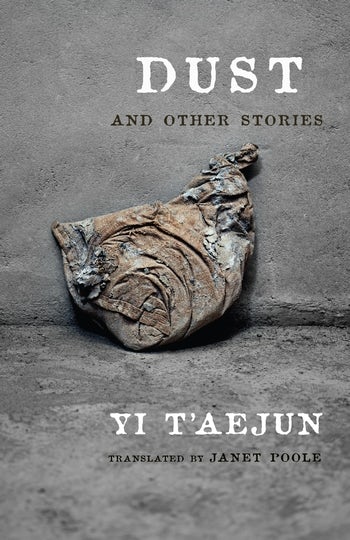An Interview with Eric Cheyfitz
The Columbia Guide to American Indian Literatures of the United States Since 1945 is the first major volume of its kind to focus on Native literatures in a postcolonial context. In this interview Eric Cheyfitz discusses the book and American Indian literature.nnQ: What does The Columbia Guide to American Indian Literatures of the United States Since 1945 have to offer the reader that other such books do not?nnEric Cheyfitz: Critical approaches to American Indian literatures of the United States have been changing over the last twenty years or so, from approaches that looked at these literatures from various cultural and strictly literary standpoints to approaches that, while certainly interested in cultural and literary matters, have begun to understand them as inseparably intertwined with the political and historical contexts of these literatures. These contexts are specifically colonial. The Columbia Guide is the first such book to centrally understand Indian literatures, both oral and written, as expressing various strategies of resistance to this ongoing U.S. colonialism and various visions of liberation from it.nnQ: Explain how the colonial context is implicated in this body of literature.nnEC: Indians in the Americas faced a violent invasion by various European imperial powers beginning in 1492, resulting over the next 400 years in genocide. The result of that invasion has been the institution by European settlers of various forms of colonialism over indigenous peoples in Canada, the United States, and Latin America. Here in the United States, this colonialism principally took the form of the expropriation of Indian lands and the forced resettlement of Indian communities on federal reservations. Once the military stage of the invasion came to an end in the dead of winter, 1890, with the massacre of a band of exhausted Lakota men, women, and children by the Seventh Cavalry, Custer’s old outfit, at Wounded Knee in South Dakota, the U.S. strategy became one of forced assimilation. While there was a brief respite from this policy from 1934 until the end of World War II, it resumed again in what is known as the termination and relocation era, which began right after the war and only ended in the late 1960s. We are now in the period of what is generally known from a U.S. perspective as the era of self-determination, in which the federal government, under the authority of Congress, which is preeminent in Indian affairs, has granted reservation communities a certain amount of autonomy over internal matters. But the federal government still holds title to all reservation land, and federal Indian law remains the law of that land.nnQ: You mention “federal Indian law” as the “law of the land” on reservations. Yet we often hear that Indian nations have sovereignty. Can you explain that contradiction?nnEC: Well, Indians are the only group of people in the United States who come under a separate body of law, which is formally titled “federal Indian law,” most of which is systematized in the twenty-fifth title of the U.S. Code, with the exception of a few provisions that are located in the eighteenth title. This is so because initially the U.S. government dealt with Indian communities as separate nations, through treaties. Then, as the government was able to limit the sovereignty of Indian peoples through force, it dealt with the communities as what is termed in federal Indian law “domestic dependent nations.” These nations comprise what is formally known in this law as “Indian country,” most of which is contained in reservation lands (approximately fifty million acres). Federal Indian law, then, is a decidedly colonial body of law, which is to say it has to do with maintaining power over Indian communities, not with according justice to them. That is, it has to do in the first place with significantly limiting Indian sovereignty and only acknowledging that sovereignty within these highly restricted limits. However, Congress made all Indians U.S. citizens by fiat in 1924; so today tribally enrolled Indians, that is, all Indians who are citizens of federally recognized Indian nations, have a kind of dual citizenship in that they are governed by two jurisdictions in complicated and contradictory ways.nnQ: The Columbia Guide provides a review of American Indian literatures post- World War II. What is the difference between works written before the war and those that are the focus of the guide?nnEC: Part I of the Columbia Guide explains how U.S. American Indian literatures have represented the relationship between Indians and federal Indian law from the 1820s, when Indians began writing extensively, to the present moment. And it argues that representing this relationship has been a central, though largely unacknowledged, task of these literatures. Part II of the Guide concentrates on the post-World War II period, and as Arnold Krupat and Michael Elliott point out in their essay on Native fiction, it is useful, if not at all usual, to think of contemporary U.S. Indian literatures within this period of global revolutionary resistance to European colonialism. Thus, the Columbia Guide is focusing on U.S. American Indian literatures as postcolonial literatures while recognizing, of course, that U.S. Indian nations remain under a colonial regime, the regime of federal Indian law.nnQ: Your answer to the previous question suggests that Indians in the United States began writing at a rather late date. Can you explain that?nnEC: When I speak of “writing” here, let’s be clear that I am referring to alphabetic writing and to a cultural reliance on texts and literacy for significant forms of communication and consequently for social status, not to various forms of inscription (pictographs, hieroglyphs, etc.), which all cultures have and have had. And letÕs also be clear that I do not understand alphabetic writing as in any way an advance over what were fundamentally oral cultures. So in this sense, writing came to Native societies first as a violent intrusion, principally in the form of Western law and religion. Consequently, conquest and writing came hand in hand to Indian communities, which for the most part did not adopt alphabetic forms of writing until they were forced to; thus, such adoption was ambivalent at best. In the United States, in the early 1820s the Cherokees were the first tribe to develop a written syllabary in their own language, and by the end of that decade they were publishing the first Native newspaper, the Cherokee Phoenix, in a Cherokee and English bilingual edition. Contemporary U.S. American Indian literatures often express this fundamental tension between oral and written cultures.nnQ: But even with this ambivalence to writing, haven’t Indians increasingly produced some of the finest writing in the United States, in all genres of literature?nnEC: That’s certainly the case. And I would only emphasize that I think the Indian critique of the colonial history of writing in the United States is part of what gives Indian literatures their strength. From William Apess’s eloquent analyses of the flaws in U.S. democracy in the 1820s and 1830s to Leslie Marmon Silko’s great novel of the future of indigenous revolution in the Americas, Almanac of the Dead, U.S. Indian writing is the most powerful literature we have to apprise us of the failures of U.S. democracy and at the same time to offer us alternative visions of how we might live productively as human beings.nnQ: Why do you think Indian literatures are unique in offering us a model of how to live?nnEC: I think this is the case because Indians in the United States are at once both the quintessential insiders and the quintessential outsiders. Because of the history of their dual citizenship, which I mentioned, they have a particularly unique double vision of this country. Take a look, for example, at Simon Ortiz’s exquisite long poem From Sand Creek, which in a finely tuned elliptical combination of prose epigraph and poetic stanza chronicles the history of U.S. imperial violence, not only against Indians in all too common events like the Sand Creek massacre of Cheyennes by U.S. troops and Colorado militia in 1864 but also in places like Vietnam—it is no coincidence that enemy territory in Vietnam was referred to as “Indian country,” and this is now the case in Iraq as well. Yet while the poetic voice in From Sand Creek is immersed in this history of violence, it also maintains an alternative vision that, while severely tempered by this history, might be likened to a kind of hope.nnQ: In what way can this “alternative vision” give us hope?nnEC: Well, what I would say is that traditional Native philosophies and practices—and by “traditional” I don’t mean ideas or practices locked in the past, but ongoing dynamic adaptations of certain core values—are based in structures of extended kinship. And this extended kinship begins with a certain relationship to the land and to everything that springs from the land. In Native thinking, the land is literally a relative, as is everything that springs from the land: animals, plants, and minerals; the very stones of the earth are living kin to indigenous peoples. In this universe of kinship, land is not fungible—there was no market for land before Europeans invaded the Americas—and the wealth of this inalienable land is held in common. The working principle in this universe is one of balance in all relationships, both social and natural. The Navajo word for this balance is hozho, which also means, among other things, “beauty” and “happiness.” Long before the Declaration of Independence was ever thought of, Indian societies were already based on the idea that “all men are created equal” and, indeed, were living this idea, though it was not simply “men” or “human beings” that were created equal but all parts of the natural world. And this is so because in Native philosophies all parts of the natural world, including human beings, live in relation to one another. And maintaining the balance of these relationships, this kinship, is the basis of what I would call “democracy,” that is, justice extended throughout the world. In contrast, we live in a world today of tremendous imbalances, extensive injustices: imbalances of wealth and poverty (eight million people die each year of poverty) and of the environment, imbalances that are threatening the life of the planet. I would say that the West’s solutions to these problems, where they have even tried to solve them, have failed. In light of this, and if we have any interest in survival in some decent way, I think we would do well to begin to look seriously at these Native philosophies of kinship in order to consider how we might begin to translate them into solutions to our central problems of world poverty and environmental disaster. The American Indian literatures that we represent in the Columbia Guide articulate the visions of sustainability that I am suggesting here. These, then, are truly democratic visions.n



